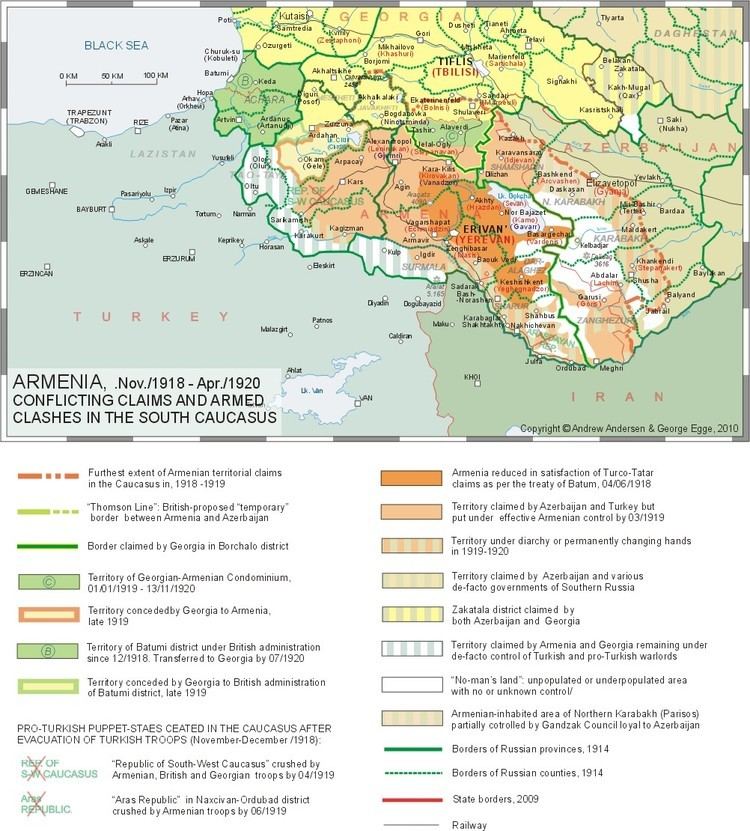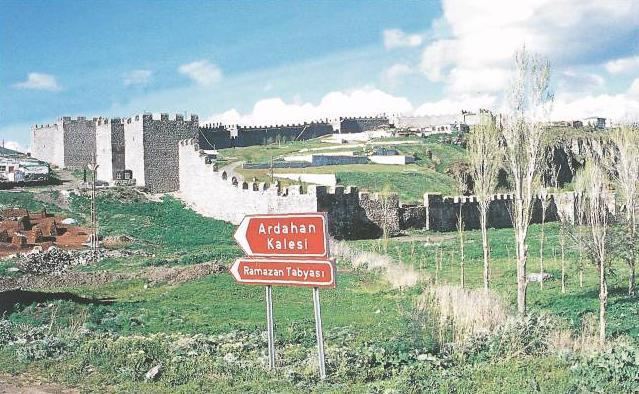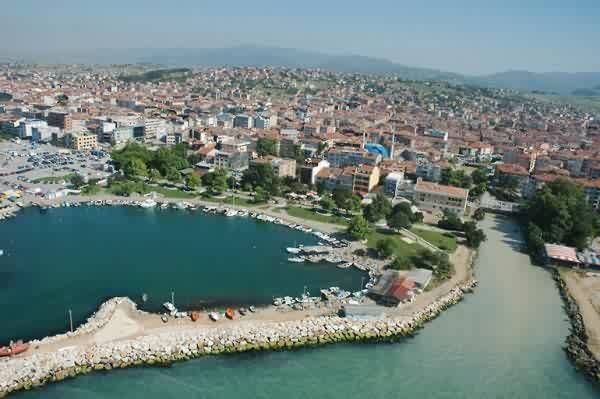Country University Ardahan University Mayor Faruk Koksoy (AKP) | Elevation 1,900 m Area 1,191.37 km2 | |
 | ||
Map of Ardahan
Ardahan (Georgian: არტაანი) is a city in northeastern Turkey, near the Georgian border.
Contents
- Map of Ardahan
- Silhouette of ataturk turkey ardahan
- Ancient and medieval
- Modern
- Life in Ardahan
- Climate
- International relations
- References

Silhouette of ataturk turkey ardahan
Ancient and medieval

in 12th century BC region was part of newly formed tribal confederacy of Dieuchi. The first surviving record about this region is attributed to Strabo, who calls it Gogarene (Gugark) and mentions that it was a part of the Kingdom of Armenia, taken away from the Kingdom of Iberia. From the ninth to eleventh centuries, Ardahan served as an important transit point for goods arriving from the Abbasid Caliphate and departing to the regions around the Black Sea. During the eighth to ten centuries the city was in the hands of the Bagrationi princes of Tao and Klarjeti, After the liberation from Arab rule, it was incorporated into the Kingdom of Georgia. According to the Arab historian Yahya of Antioch, the Byzantines razed Ardahan and slaughtered its population in 1021. The Mongols took hold of the city in the 1230s but the Georgian princes of Samtskhe-Saatabago were able to recapture it in 1266. In 1555, by the Peace of Amasya, the western part of the principality of Samtskhe-Saatabago was annexed by the Ottoman Empire, and Ardahan was included into the sanjak of Ardahan (an overall part of the vilayet of Akhaltsikhe). The Ottomans constructed a substantial fortress at Ardahan. The Turkish traveler Evliya Chelebi visited Ardahan in the 1640s and gave the following description: "The fortress of Ardahan sits atop an inaccessible cliff. It is square-shaped and sturdy....This fortress has a cold climate and, because of this, there are no gardens or orchards. Fruits arrive from the fortress at Ajara and Tortum."
Modern
Before 1829 Ardahan was recorded to have had 400 households, the great majority of them Armenian. Many of them later immigrated to the Russian Empire. During the Russo-Turkish War (1828–1829) it was an important road junction connecting the border fortress of Akhaltsikhe to the Kars-Erzerum road. The town passed into the hands of Russia following the 1877-1878 Russo-Turkish War and was made a part of the Kars Oblast. The majority of the town was made up of Armenians, while other ethnic groups included Georgians, Pontic Greeks (here usually called Caucasus Greeks), Caucasus Jews, Russians, Kurds, Ossetians, and Yazidis. The town flourished economically under Russian rule, exporting fruits, smoked lamb meat, wheat and wood. New roads were constructed, linking Ardahan to Akhalkalak, Kars and Oltu. On December 25, 1914, in the early months of the First World War, the Ottoman army occupied Ardahan and massacred many of its Armenians, Pontic Greeks, and Georgians. The Russians, with the help of Armenian and Pontic Greek militias, captured the town on January 3, 1915, allowing some of the original inhabitants who had fled to return.
As Russian forces withdrew from the front following the October Revolution, a small Armenian volunteer force took up positions to defend the town from the approaching Ottoman Army. On March 6, 1918 the Ottoman army, along with the help of the town's Muslims, overwhelmed Ardahan's Armenian garrison and retook the town. The British occupied Ardahan after the end of the First World War and eventually handed control over it to the Democratic Republic of Georgia. When the Turkish Nationalists captured Ardahan in November 1920, the town's remaining Armenians, Pontic Greeks, and Georgians fled to Armenia, northern Greece, and Georgia. The Treaty of Moscow, signed the following year between the Soviets and the Turks, confirmed Ardahan as a part of Turkish territory.
In 1986 a brief description of the fortress was published. The original late antique/medieval walls of Ardahan Kalesi were extensively rebuilt several times and in the 19th they were adapted to accommodate small cannons.
In 1960, Ardahan's population stood at 7,228 and was populated by both Kurds and Turks.
Life in Ardahan
Ardahan is one of the small provincial capitals in Turkey and was until 1993 a small town in the province of Kars. In 1993 the district was made a province, with Ardahan as its regional capital. This resulted in new investment in government buildings and services, but life in mountains that spend half the year under snow is still a struggle.
Kars Kafkas University has an institute in Ardahan. There is also a substantial military presence in the town. The army no longer occupies the Ottoman fortress and it is accessible to visitors. The civil servants, academics, and military officers stationed in Ardahan help to support the local economy. These people have their own clubs and guest houses, as in many Turkish towns.
The region is renowned for its hard yellow kaşar cheese, its cattle markets, and its geese. Province is also home to various infrequent and endangered wildlife, such bears, wolves and chamois.
Climate
Ardahan has a warm summer humid continental climate (Dfb) under the Köppen classification, bordering on an alpine subarctic (Dfc) climate under the Köppen classification, and a cool summer continental climate (Dcb) under the Trewartha classification, with warm and brief summers with cool nights and very cold winters. Like in other parts of Eastern Anatolia, the climate turns subalpine on the hillsides. Major cities and towns have been situated on lower elevations for milder climatic conditions, as much as possible, therefore the city and the main towns have less characteristics of subalpine climate in comparison to the province in general.
Winters are very snowy with snow cover lasting from late October to mid April. Although sometimes it snows in September and May, it usually doesn’t remain on the ground for long. On rare occasions it can even snow in summer months, especially early and late summer, such as the August 2013 incident. However strong snowfall was recorded even in July in the past. Average annual temperaure is 3.8 °C (38.8 °F). The highest recorded temperature was 35 °C (95.0 °F) on 29 August 1998. The lowest recorded temperature was −39.8 °C (−39.6 °F) on 21 January 1972. The highest recorded snow thickness was 113 cm (44.5 inches) on 30th January 1968.
International relations
Ardahan is twinned with:
